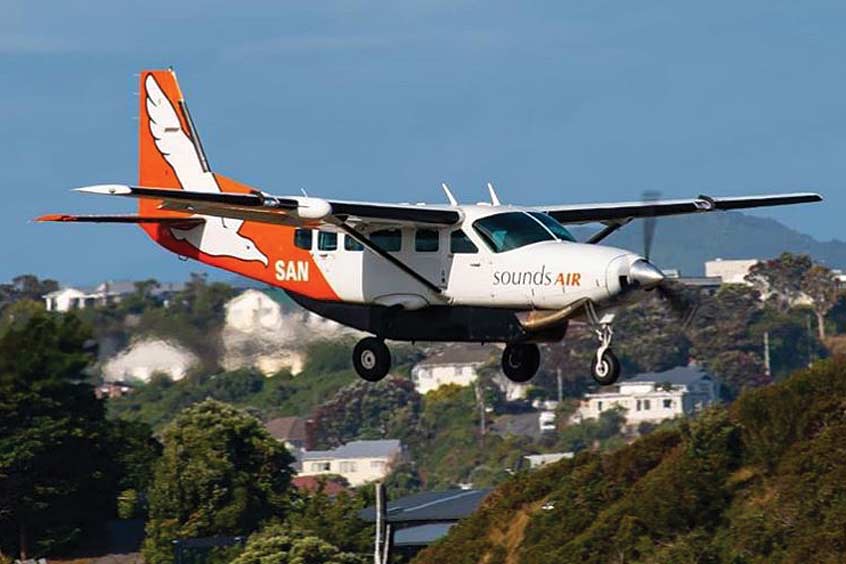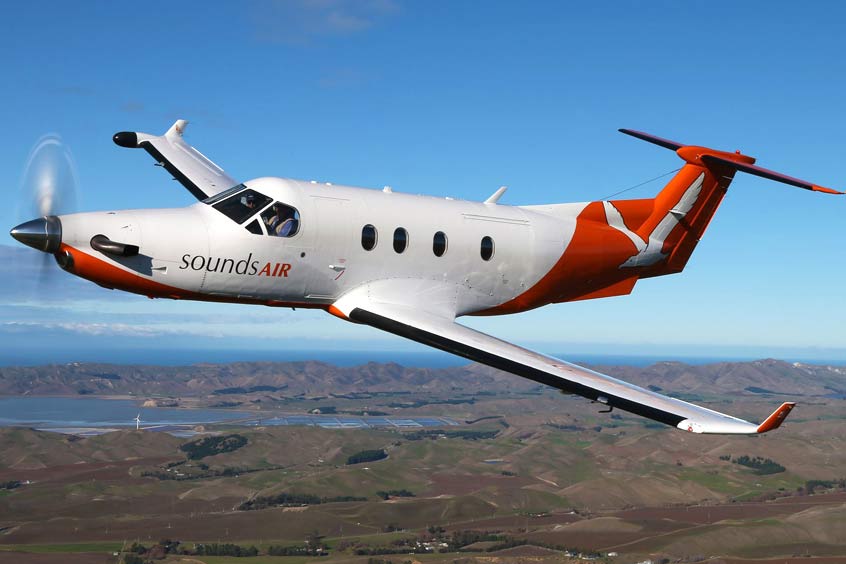See more information from the Business Air News Handbook
Press Release



Issued by Sounds Air Travel and Tourism.
November 24, 2020
New Zealand regional carriers, such as Sounds Air, play an important role keeping local communities connected, because alternative modes of transport are often unfeasible.
Sounds Air started in 1987 in response to local communities wanting a more convenient means of transport between the two islands. The airline's managing director, Andrew Crawford, says the Cook Strait, separating New Zealand's North and South island, “is a body of water that is pretty notorious with ferries.” The ferry sailing also takes three to three-and-a-half hours compared to 25 minutes by air.
The airline's first passenger service connected Wellington, the country's capital city at the southern tip of the North Island, to Blenheim, a large town in the north-east of South Island. It then competed directly against the Wellington-Picton sea ferry service by building an airstrip that it still owns, at Koromiko near the port of Picton.
Today, Sounds Air has scheduled services on nine domestic routes, of which for seven of these Sounds Air is the only scheduled operator.
Crawford says air services are crucial to many local communities and a key driver of local economic growth. He cites as an example Westport, a town on the south island with a population of around 4,500.
“Westport would be in a serious predicament without air services. It is a town that is not that big, but it has a wide catchment area. The town doesn't have a lot of specialist services. We fly in lawyers, accountants, geologists, etc.”
“How else would people get there?” Crawford asks rhetorically. “The alternative is to fly Wellington-Nelson, but then you would have a two to three-hour drive to Westport.”
Sounds Air connects the town to the North Island with its Wellington-Westport service that uses Pratt & Whitney-powered Pilatus PC-12s. “We have a twice daily service on the route, so it really opens up that town,” he adds.
The airline's services have also proven to be vital in times of disaster. When a 7.8 magnitude earthquake hit Kaikoura on the South Islands east coast in 2016, the town was cut off with roads damaged and impassable to all traffic. Sounds Air launched air services from Blenheim and Christchurch to Kaikoura, which has a 700 metre-long runway, which is too short for most aircraft, but not for the airline's Pratt & Whitney-powered Cessna Caravans.
Sounds Air today operates a fleet of four Cessna Caravans and six PC-12s, all powered by the Pratt & Whitney PT6A engine. The benefit of having one engine type across the fleet is commonality that then simplifies the operation, says Crawford, adding that “you have one set of tooling.”
Sounds Air uses Pratt & Whitney's Fleet Management Program, which Crawford says the engine-maker refined to meet the airline's needs.
He says the airline also uses Pratt & Whitney's Flight Data Acquisition Storage and Transmission System (FAST), which is used for engine condition trend monitoring (ECTM). One of the many benefits of ECTM, is the airline no longer needs to perform a hot-section inspection of the engine based on number of flights hours, says Crawford. Instead it does a hot section inspection if the engine data indicates the condition of the engine warrants it, he adds.
Sounds Air previously would perform a hot section inspection at half-life, “but now we don't have to, as we can work off the data,” he adds.
Sounds Air, started in 1987, is a locally owned and operated airline based at Picton Airport, in the heart of Marlborough, New Zealand. It links the North and South Islands between Wellington, Picton, Blenheim and Nelson. It has been operating for more than 30 years flying in and around the Marlborough Sounds, Cook Strait, Wellington and Nelson.